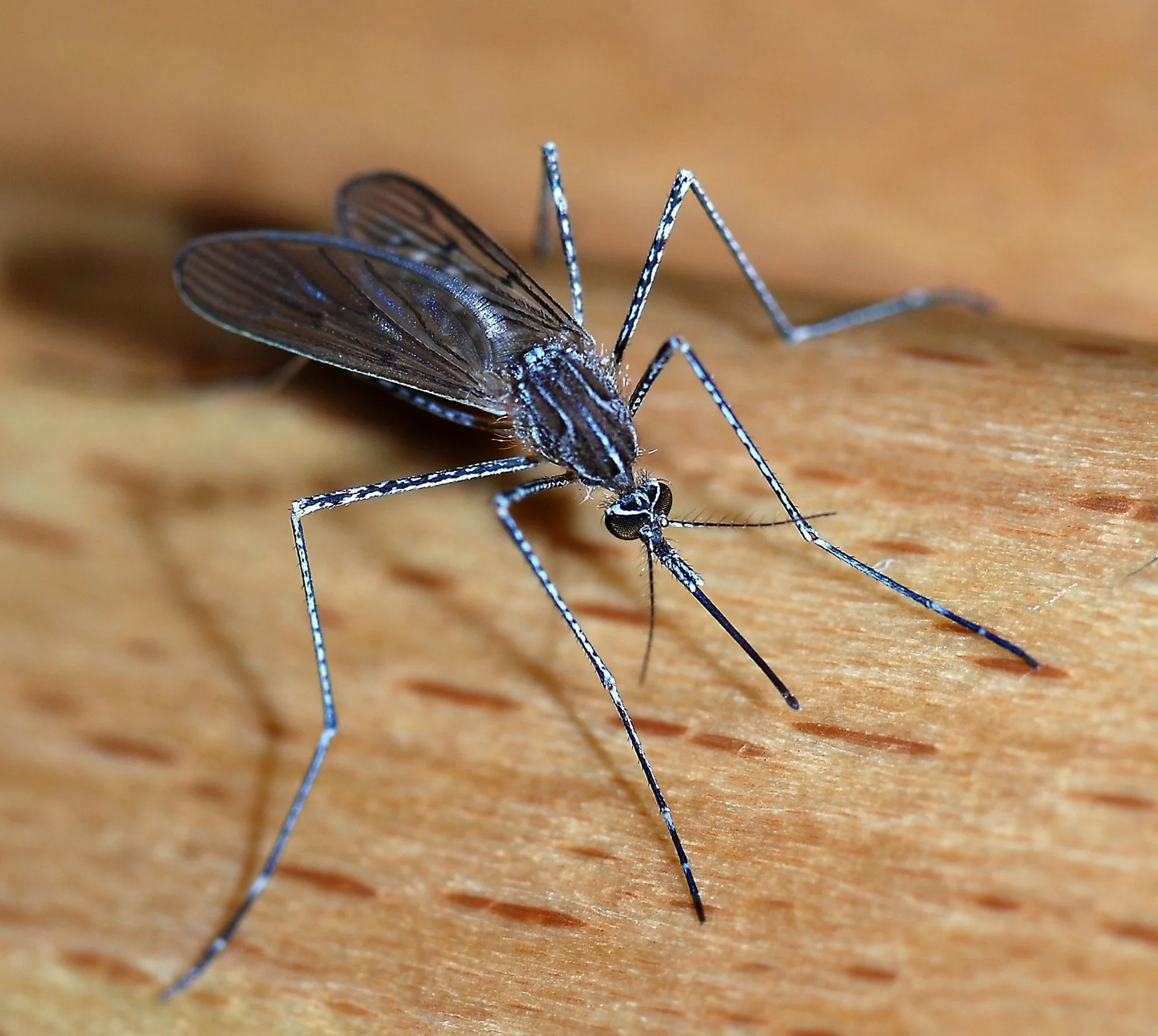By Alvesgaspar - Own work, CC BY-SA 3.0, https://commons.wikimedia.org/w/index.php?curid=3112480
Goblin and the Mosquito Florence Price Grade 4 ABRSM 2025 – 2026
Character/story – obviously the title of the piece provides the inspiration for the interpretation of this music. Even though goblins are renowned for their mischievousness and sometimes maliciousness, the story of this piece conveys the mischievousness character. Right from the get-go the goblin and the mosquito are interacting with the goblin represented by the bass notes and the mosquito with the treble notes. In bar 2 the mosquito is being annoying and irritating. In some bars, for example bars 5, 7, 9 – 13, bars 33 - 40, the goblin and mosquito are having fun together. However, by the end of bar 13, the mosquito is gently provoking the goblin again. The player will enjoy deciding which part represents which character throughout the piece. It is wise to keep in mind that the music is light-hearted but is dramatic and theatrical.
Form – the goblin motif that occurs in bars 1 and 2 returns frequently throughout the piece. Section 1 covers bars 1 to 8, section 2 bars 9 to 20, section 3 bars 21 to 32, section 4 bars 33 to 40, section 5 is a repeat of the opening section and section 6 bars 49 to 56 concludes the piece. This music commences in the key of A minor; the music moves to D minor after the chromatic bars of 9 to 12. In bar 21 the music returns to A minor. There is a character change in the fourth section; it is as if the mosquito has the upper hand. In this section the music is in C major. From bar 41 to the end the music remains in A minor. It is a compliment to the composer that even though the music has a slightly unsettled quality, the keys used are either closely related or fairly closely related.
Main part of the music – this should occur in bar 44, this being the repeat of the opening. It would be wise to reserve the sff for this position, as the music should not be too loud at the beginning. Each section must have a focal point too, and the player must have a keen sense concerning the levels of their dynamics.
Phrasing – in the first and fifth sections, there are two phrases and these balance each other. And within each phrase there is balancing too as the first two bars are answered in the second two bars. The phrasing in the second section is a little harder to quantify and these phrases contain a mosquito motif that twice interrupts the flow of the music. The third section contains two phrases with the first phrase being a repeat of the opening phrase followed by an extended phrases of eight bars. The C major section contains two phrases which are perfectly balanced. The coda could be considered as having two balancing phrases or an extended one.
Tempo, time signature and rhythmic patterns – obviously a fast tempo is necessary for portraying the cheeky and mischievous character of the music however the tempo will be dependent on the ability of the player in playing the ornaments quickly enough. Confident finger agility will be requisite for the player of this piece; the technical concerns must be taken in account when considering this piece for the exam. The suggested tempo is 112 crotchet beats per minute however a speed of 100 could be used. It is interesting to note that the composer has written the music is quadruple time rather than duple time. Often the music is presented in sets of two bars, it is as if in some areas alternate bar lines have been removed. The ornaments used in this piece may provide concern for some players. It is essential that they are played on the correct part of the beat. Playing with the metronome will be necessary when learning this piece; the player must be able to play the music at differing speeds, especially slower ones. Once this piece is well-known the player may start to accelerate, thus resulting in loss of clarity and control. There is a danger that the player could not acknowledge the rests in bars 31, 31, 55 and 56. In bars 36 and 40 there is an element of surprise with the rests at the end of the bar.
Touch/articulation – a bright, intense touch is required in the legato passages. And a crisp and energetic touch is required for the playing of the staccato notes. The staccato notes that occur at the end of a legato pattern must be played in a different way with the fingers staying in contact with the notes as they are being lifted off the keys. The composer has clearly articulated this piece; nothing has been left to conjecture. All articulation must be carefully adhered to throughout. For example, the tenuto in the R.H. in bar 5 must be followed by a lift, prior to playing the following R.H. pattern. It is interesting to note that in bar 4 there is an accent mark provided within brackets which one could assume is reinforcing the sff.
Dynamics – here is a wonderful opportunity for players to employ a wide range of dynamics when playing a piece with dynamics ranging from pianissimo to sff. However, the player must be very careful to ensure that the sound is never harsh or strident as the cheeky and mischievous character will be affected. There are numerous sudden changes in the dynamics; these must be strictly adhered to. Some additions could be made to the dynamics provided in the music; for example, a crescendo in the chromatic section would be an appropriate addition. Also, the player must consider that where melodic material is repeated the dynamics should differ otherwise the listener may become bored. The dynamics in this piece are an integral part of the character of the music. In bars 5 – 8, for example, the L.H.’s dynamics of the first notes of each bar are crucial to the overall dynamics.
Balance between the hands – in most areas the hands are equal partners when playing this music. The only melodic pattern where the balance is slightly to the R.H. should occur in bars 5 – 8, 15 – 17, 19 – 20, bars 45 – 48 and bars 50 – 51.
Agogic effects – there should be no rubato applied in this piece; in some areas the composer has written in a rallentando, such as bars 31 – 32 and the final two bars.
Considerations when playing this piece –
· The player requires agility mentally and physically when playing this piece. At all times the player must be looking and thinking ahead as the dynamics, position and melodic material are constantly changing throughout.
· The music must have a ‘rock-solid’ beat throughout.
· The player must be confident in using some hand gestures, there must be a degree of flamboyance when playing this piece.
· The ornaments must sound instinctive, not laboured in any way. The ornaments should be lightly executed.
· The chord at the beginning of bar 13 is the same as the chord in bar 16.
· The player must be in a good body position to play the fourth section, as well as the coda.
· A suggestion in bar 4 (and others) to play the low A of the pattern with the L.H. This, of course, would require a change of fingering in the R.H. And the player must have the R.H. in position before commencing to play the pattern.
· The R.H. at the beginning of bar 49 could be misread.
· It is quite a tricky piece to commence.
· In the final two bars the player must consider what to do with the L.H. It would be wise to hold the L.H. above the keys until the end. The final rest must be acknowledged.


